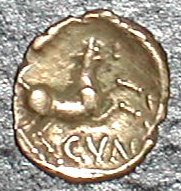 |
 |
alpine newt larva pix: |
| Author | Message |
|
ben rigsby Senior Member Joined: 27 Apr 2010 No. of posts: 337 View other posts by ben rigsby |
Posted: 25 Aug 2010 hi RAUKERS, pix of alpine newt LARVAE are rarely included in the "alien species" sections of uk field guides. this is a pity since its obviously a good idea to keep an eye out for all stages of the life cycle in the field and the adults are somewhat secretive (in my humble opinion!). the species eggs are a little greyer than those of the native newts. 


however you feel about the prescence of alpestris in the uk, theres no denying their beauty is there? distinctive and distinguishable. hope the pix are helpful. all the best, ben Diversity. |
|
herpetologic2 Senior Member Joined: 15 Jun 2004 No. of posts: 1369 View other posts by herpetologic2 |
Posted: 26 Aug 2010 Why don't we put together an online guide of these animals then? that is a very different to the metamorphs found in Essex J Vice Chair of ARG UK - self employed consultant - visit ARG UK & Alresford Wildlife |
|
ben rigsby Senior Member Joined: 27 Apr 2010 No. of posts: 337 View other posts by ben rigsby |
Posted: 26 Aug 2010 good idea. id like to see more pix/info for identifying the other notable alien caudatan too. ie the italian crested newt (carnifex). if anyone can help. ive never seen a live one of these myself. how easy are they to tell from cristatus in the field? it surely cant be easy to look for the subtleties ive read about like less stippling and a slightly less jagged crest (t carnifex) by torchlight in a muddy pond. are T Crist and T Carn distinguishable in the terrestrial phase? can you tell the larvae apart easily? and what are carnifex/cristatus hybrids like? ben Diversity. |
|
Caleb Forum Coordinator Joined: 17 Feb 2003 No. of posts: 448 View other posts by Caleb |
Posted: 27 Aug 2010 Earlier stage alpestris larvae are also quite easy to distinguish- the tail is very blunt and the fin always has loads of dark markings. By the way, that one seems pretty big, and looks like it might have signs of a developing crest (dotted line along the back)- is it possible it's neotenous? I kept carnifex for some years, and I'd say that they're practically impossible to distinguish from cristatus by eye (at any stage)- there's a massive amount of overlap in all their characteristics. This paper: Geographic variation and taxonomy of crested newts (Triturus cristatus superspecies): morphological and mitochondrial DNA data summarises a lot of the differences between all the crested species (and has lots of pictures)- they suggest that the best way to distinguish cristatus & carnifex is by using x-rays to count their ribs (usually 16 in cristatus, 15 in carnifex). |
|
Suzi Senior Member Joined: 06 Apr 2005 No. of posts: 860 View other posts by Suzi |
Posted: 27 Aug 2010 X-rays to count the ribs of a newt! Sounds like a fiddly sort of job  Suz |
|
AGILIS Senior Member Joined: 27 Feb 2007 No. of posts: 694  View other posts by AGILIS |
Posted: 28 Aug 2010 Your all wrong its a cross between a sand lizard and a common palmate newt,that turn up on a regular basis when the August weathers wet Your all wrong its a cross between a sand lizard and a common palmate newt,that turn up on a regular basis when the August weathers wet  LOCAL ICYNICAL CELTIC ECO WARRIOR AND FAILED DRUID |
|
ben rigsby Senior Member Joined: 27 Apr 2010 No. of posts: 337 View other posts by ben rigsby |
Posted: 18 Sep 2010 thanks for the link caleb. a bit indigestible for a half-wit like me but it was interesting and i enjoyed it all the same. esp the wonderful "belly" pic. ive not spotted any other large larval triturus/ichyosaura/mesotriton/whatever theyre calling it now alpestris specimens and the parents werent neotenous far as i know. i cant think of any obvious environmental trigger for neoteny either. if thats what causes the condition. that said, ive never seen a neotenous newt of any species and you probably know more about the subject than i. ive only read about it. regarding carnifex intros, it seems then (taking on board what youve said) that this species could be the bigger potential threat to our natives. since IDing in the field is all but impossible, people could easily conclude in error that what theyve seen is cristatus. thankfully few colonies are known to exist currently. are they still in Newdigate, Surrey? what is the degree of viability in carnifex/cristatus hybrids i wonder? thanks, ben KEITH; is that an Amphibitile or a Reptibian then?  Diversity. |
|
David Bird Forum Specialist Joined: 17 Feb 2003 No. of posts: 515 View other posts by David Bird |
Posted: 19 Sep 2010 http://mefgl.bangor.ac.uk/~bss024/pdfs/2000/Brede%20BJLS%202 000.pdf gives the most complete paper on the Newdigate colony and spread of the species which is very little. and https://secure.fera.defra.gov.uk/nonnativespecies/index.cfm? sectionid=51 just click on the species in the list to get a risk assessment for the species with all the relevant references. David British Herpetological Society Librarian and member of B.H.S Conservation Committee. Self employed Herpetological Consultant and Field Worker. |
|
Caleb Forum Coordinator Joined: 17 Feb 2003 No. of posts: 448 View other posts by Caleb |
Posted: 20 Sep 2010 Unfortunately the forum software seems to insert random spaces into bare URLs (presumably as a security measure), and has broken David's links. These should work, I think: http://mefgl.bangor.ac.uk/~bss024/pdfs/2000/Brede%20BJLS%202 000.pdf https://secure.fera.defra.gov.uk/nonnativespecies/index.cfm? sectionid=51 |
- alpine newt larva pix |